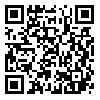دوره 7، شماره 4 - ( 9-1402 )
جلد 7 شماره 4 صفحات 304-292 |
برگشت به فهرست نسخه ها
Download citation:
BibTeX | RIS | EndNote | Medlars | ProCite | Reference Manager | RefWorks
Send citation to:



BibTeX | RIS | EndNote | Medlars | ProCite | Reference Manager | RefWorks
Send citation to:
Yaghoubi R, Emamgholipour S, Mohammadi A, Azimi Nayebi B, Mousavi A, Daastari F. Institutional Ownership and Concentration of Capital in Pharmaceutical Companies: Evidence from Iran. EBHPME 2023; 7 (4) :292-304
URL: http://jebhpme.ssu.ac.ir/article-1-467-fa.html
URL: http://jebhpme.ssu.ac.ir/article-1-467-fa.html
Institutional Ownership and Concentration of Capital in Pharmaceutical Companies: Evidence from Iran. 1. 1402; 7 (4) :292-304
Institutional Ownership and Concentration of Capital in Pharmaceutical Companies: Evidence from Iran
چکیده: (185 مشاهده)
Background: Institutional owners influence the direction of policy and the performance of owned companies. This research was motivated by the presence of pharmaceutical companies in the Tehran Stock Exchange and the uncertainty surrounding the extent and influence of institutional owners on the policy direction and performance of the companies.
Methods: This was a descriptive-analytical and cross-sectional study. The descriptive phase of the study involved measuring sales figures, market value, and market share of pharmaceutical companies listed on the stock exchange. In the analytical phase, the network of shareholders' relationships was analyzed with Gephi version 0.1 and Microsoft Excel version 2016, followed by the calculation of the capital concentration index and market share.
Results: Estimates indicated that approximately 45% of the pharmaceutical companies in Iran were publicly traded in stock exchange. In 2020, the total value of these companies in the Iranian capital market reached 9.79 billion USD. Out of this amount, 45% (equivalent to 4.4 billion USD) was offered in Tehran Stock Exchange. The concentration of final shareholders, with a Herfindahl–Hirschman index(HHI) index of 0.036, signified a monopolistic competition market. On the other hand, the pharmaceutical capital market could be classified as an oligopoly market (with aC R 4
Conclusion: Based on the results, the importance of institutional owners, such as the Social Security Organization (SSO), in the decision-making process regarding the Iranian pharmaceutical market can be acknowledged. The decisions about integration and supply chains which aimed at improving the productivity of the pharmaceutical market, need to be thoroughly examined by the institutions mentioned in this research.
Methods: This was a descriptive-analytical and cross-sectional study. The descriptive phase of the study involved measuring sales figures, market value, and market share of pharmaceutical companies listed on the stock exchange. In the analytical phase, the network of shareholders' relationships was analyzed with Gephi version 0.1 and Microsoft Excel version 2016, followed by the calculation of the capital concentration index and market share.
Results: Estimates indicated that approximately 45% of the pharmaceutical companies in Iran were publicly traded in stock exchange. In 2020, the total value of these companies in the Iranian capital market reached 9.79 billion USD. Out of this amount, 45% (equivalent to 4.4 billion USD) was offered in Tehran Stock Exchange. The concentration of final shareholders, with a Herfindahl–Hirschman index(HHI) index of 0.036, signified a monopolistic competition market. On the other hand, the pharmaceutical capital market could be classified as an oligopoly market (with a
Conclusion: Based on the results, the importance of institutional owners, such as the Social Security Organization (SSO), in the decision-making process regarding the Iranian pharmaceutical market can be acknowledged. The decisions about integration and supply chains which aimed at improving the productivity of the pharmaceutical market, need to be thoroughly examined by the institutions mentioned in this research.
نوع مطالعه: پژوهشي |
دریافت: 1402/6/10 | پذیرش: 1402/12/19 | انتشار: 1403/3/1
دریافت: 1402/6/10 | پذیرش: 1402/12/19 | انتشار: 1403/3/1
| بازنشر اطلاعات | |
 |
این مقاله تحت شرایط Creative Commons Attribution-NonCommercial 4.0 International License قابل بازنشر است. |




